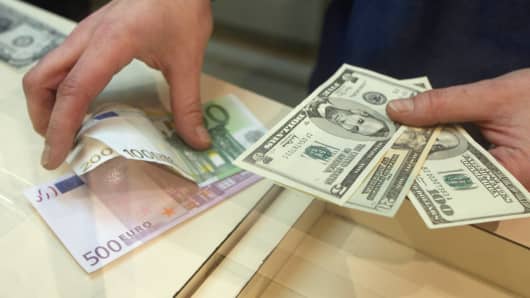They may say that one shouldn't reinvent the bicycle, but that piece of folk wisdom seems to be a thing of the past. Newer, crazier and greener transportation devices are conquering our cities’ streets. From Segways to uni-wheels, we may think we have seen it all. However, it seems like the future has much more in store for us. The devices below may just be concepts in the making, but imagining them on the streets of tomorrow is a pretty exciting thing to do.





Di-Cycle

This futuristic bike concept appeared in the Dutch city of Helmond – that has just as many roads as it does rivers. This may explain why its developers insisted on the idea that the bike should be as good on the pavement as it is on water. The device looks like something from a James Bond movie, but its designers to promise smooth operation and a simple control system, just like a regular bike.
“One” By Thomas Owen

Folding bikes may not be a ground-breaking idea, but if you look at the design of this one, you will clearly see what all the fuss is about. The concept was to create a bike that is perfect for the urban environment in more than one way. Featuring a revolutionary power assist system, “One” will give you fast and effortless way to get around the city. Once you’re done, the bicycle can be folded into a decent looking case, that will not bother anyone once you load it up on the subway. Not much else in known about the bike, but young urban travelers are waiting with bated breath. If your looking for something a bit smaller then there is even folding bike that can fit into your backpack.
Sideways Bike

Why ride a bike that’s facing forward when you can ride one that is facing sideways? At least, this is the question on designer Michael Killian’s mind. He is the creative mind behind something that seems to be the cross between a bicycle and a snowboard when it comes to the movements that set it in motion. In this model, you will see a seat in the middle with handlebars on both sides – and the rider will appear to be perched on top of this contraption overlooking the common world beneath.
Josef Cadek Locust Bicycle

True, most contemporary designers of urban bikes do stress portability. After all, we can only expect the cities of the future to get even more crowded and overruled by traffic jams. But no one takes it to quite the same level as Josef Cadek with the Locust Bicycle. This particular model folds into a perfect circle after you are done using it. The bike takes the cake when it comes to futuristic looks and is sure to be the center of attention – if nothing else, at least for its bold bright colors.
Backpack Bicycle

There is something about bicycles and backpacks that just goes so well together. So it’s only natural that at some point people would decide to put the two together. Backpack bicycle in another conceptual addition to the “foldables” family – but in this case, the designers even though about the carrying case. After you are off the bike, you can fold it quickly and neatly into a backpack and carry away like you have never had a bike in the first place. The concept was a prize winner in the International Bicycle Design Competition and we can hope to see it on the streets soon.


